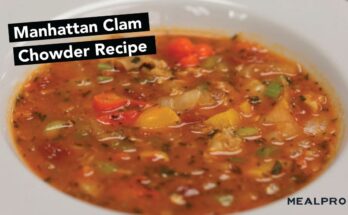Chicken Feet Recipe: When you think of chicken, your mind probably doesn’t go straight to the feet. But in many parts of the world—especially Asia, Africa, and the Caribbean—chicken feet are more than just a leftover part of the bird. They’re a culinary delicacy, prized for their gelatinous texture and ability to absorb rich flavors.
Whether you’re an adventurous eater or simply looking for a new dish to spice up your dinner menu, chicken feet are definitely a dish you shouldn’t overlook. They’re budget-friendly, sustainable, and surprisingly delicious.
Nutritional Benefits of Chicken Feet
Chicken feet aren’t just tasty—they’re packed with nutritional benefits that might surprise you. First off, let’s talk collagen. These little claws are a collagen powerhouse. If you’re into skin health, joint support, or just looking for a natural protein source, chicken feet are gold.
Each serving of chicken feet offers a hefty dose of protein and almost no carbohydrates, making them a keto-friendly option. Plus, they’re loaded with minerals like calcium, magnesium, and phosphorus—key nutrients for healthy bones.
That collagen content we mentioned? It’s great for your skin elasticity, reducing wrinkles, and even improving gut health. People who regularly consume bone broth or gelatin often turn to chicken feet as a homemade, nutrient-rich source.
But it’s not all about beauty. Collagen also supports tendons, ligaments, and joint cartilage, which is particularly beneficial for athletes or older adults dealing with joint issues. So if you’ve been popping collagen supplements, maybe it’s time to let food be your medicine and start cooking up some chicken feet instead.
Preparing Chicken Feet
Cleaning and Trimming Chicken Feet
This step is crucial—don’t skip it! Raw chicken feet need a little TLC before you start cooking. You’ll want to start by thoroughly washing them under cold running water. Give them a good scrub to remove any dirt or residue. Most feet sold in Asian markets are already cleaned, but double-check to be sure.
Next, remove any leftover yellow skin or outer membrane using a paring knife. If you see black spots or dirty nails, trim them off. Speaking of nails—yes, you’ll want to snip those claws! Use kitchen shears or a sharp knife to cut off the toenails at the first joint. This not only makes them more palatable but also gives them a cleaner look.
Once cleaned and trimmed, soak them in a bowl of salted water or vinegar water for 15–20 minutes. This helps eliminate any lingering odors and further tenderizes the skin.
Essential Ingredients for Flavor
Flavor is everything with chicken feet. Because they don’t have much meat, the seasoning and sauces do most of the talking. Here are the staple ingredients that will elevate your chicken feet recipe:
- Soy Sauce (Light and Dark): For depth and umami.
- Garlic and Ginger: The base of almost any savory Asian recipe.
- Star Anise and Cloves: For that warm, aromatic note.
- Chili Peppers: For heat—optional but highly recommended.
- Sugar or Honey: A touch of sweetness balances the salty and spicy.
- Shaoxing Wine or Cooking Wine: Adds complexity and fragrance.
Don’t be afraid to mix and match according to your taste preferences. Some recipes include oyster sauce, hoisin sauce, or even black bean paste for added richness.
Once you’ve got your ingredients lined up and your chicken feet prepped, you’re all set to dive into the cooking process.
Cooking Methods for Chicken Feet
Boiling for Tenderness
Boiling is the first step in many chicken feet recipes, especially if you’re planning to braise or deep fry them afterward. Why? Because it softens the feet, makes the skin and cartilage tender, and preps them to soak up all that delicious sauce you’re about to throw at them.
Start by bringing a large pot of water to a boil. Toss in your cleaned chicken feet and let them simmer for about 10–15 minutes. You can add aromatics like slices of ginger, a couple of garlic cloves, or even a bay leaf to infuse more flavor during this stage.
After boiling, drain the feet and rinse them under cold water to stop the cooking process. This also helps make the skin slightly firmer, which is especially useful if you’re going to deep fry them next.
You’ll notice the feet have become plump and a little jiggly—don’t worry, that’s a good sign. That means the collagen is doing its thing. From here, you can choose whether to go crispy with frying or flavor-packed with braising.
Deep Frying for Crispiness
Wanna add some crunch to your chicken feet? Deep frying is where it’s at. After boiling and drying the feet thoroughly (moisture and hot oil do NOT mix well), heat up a pot of oil to around 350°F (175°C).
Carefully drop the chicken feet into the hot oil and fry until they’re golden brown—this usually takes about 5–7 minutes. Be sure to use a splatter screen or lid, as the moisture inside the feet can cause some serious sizzling action.
Once they’re done, remove them with a slotted spoon and let them drain on a paper towel. Now, here’s the secret step—after frying, soak them in ice water for a couple of hours. It may sound odd, but this process softens the skin and makes them ready to absorb all the sauce during braising.
Yes, it’s a bit of extra effort, but it pays off big time in texture and taste. The outside will still have a bit of chew, while the inside turns tender and juicy.
Braising for Flavor Infusion
Braising is where the magic really happens. This is the technique that transforms basic chicken feet into a flavor bomb. After boiling and optionally frying, the feet are slow-cooked in a rich, savory sauce until every bite is soaked with taste.
Start by heating a bit of oil in a wok or deep pan. Toss in garlic, ginger, star anise, and a touch of chili flakes if you like it spicy. Let them sizzle for a minute, then add your chicken feet.
Now, pour in your flavoring agents: soy sauces (both light and dark), Shaoxing wine, sugar or honey, and just enough water or broth to cover the feet. Bring everything to a gentle boil, then reduce to a low simmer.
Cover and braise for 45 minutes to an hour, occasionally stirring to make sure nothing sticks. By the time you’re done, the feet should be fall-off-the-bone tender, glossy with sauce, and packed with deep, savory flavor.
This is the technique used in Chinese dim sum restaurants, and once you try it at home, you’ll be blown away by how restaurant-quality it turns out.
Step-by-Step Chicken Feet Recipe
Ingredients List
Here’s your go-to ingredients list for making braised chicken feet that are just as good as what you’d find at a dim sum spot:
- 1 lb (450g) chicken feet (cleaned and trimmed)
- 3 tablespoons light soy sauce
- 1 tablespoon dark soy sauce
- 2 tablespoons Shaoxing wine or cooking wine
- 1 tablespoon oyster sauce
- 1 teaspoon sugar (or honey)
- 2–3 garlic cloves (smashed)
- 2 slices of fresh ginger
- 1–2 dried chili peppers (optional)
- 2 star anise
- 1 cinnamon stick (optional)
- 2 cups water or chicken broth
- 1 tablespoon oil (for sautéing)
Optional for frying:
- Oil for deep frying
- Ice water (for soaking post-fry)
Detailed Cooking Instructions
Let’s break it down step-by-step so even beginners can nail this recipe.
Step 1: Clean and Prep Chicken Feet
- Wash chicken feet thoroughly.
- Remove outer skin if needed, snip off claws.
- Soak in vinegar or salted water for 15–20 minutes.
- Rinse and pat dry.
Step 2: Boil the Chicken Feet
- Bring a pot of water to boil with ginger and garlic.
- Add chicken feet and boil for 10–15 minutes.
- Drain and rinse under cold water.
Step 3: (Optional) Deep Fry for Texture
- Heat oil in a deep pot to 350°F (175°C).
- Fry the feet for 5–7 minutes until golden.
- Remove and drain on paper towels.
- Soak fried feet in ice water for 1–2 hours.
Step 4: Braising the Chicken Feet
- Heat 1 tablespoon oil in a wok or deep pan.
- Sauté garlic, ginger, star anise, and chili.
- Add chicken feet and stir well.
- Pour in soy sauces, Shaoxing wine, oyster sauce, sugar.
- Add enough water or broth to cover the feet.
- Bring to a boil, reduce heat, and simmer for 45–60 minutes.
- Stir occasionally to prevent sticking.
Step 5: Serve and Enjoy
- Once tender and saucy, remove from heat.
- Serve hot with rice, noodles, or as a snack on its own.
This recipe gives you the full, restaurant-style experience right at home—rich flavor, tender texture, and that addictive umami bite that keeps you coming back for more.
Serving Suggestions and Variations
Serving with Rice or Noodles
After all the time and love you’ve put into cooking your chicken feet, you’ll want to serve them in a way that complements their bold flavor and tender texture. One of the most classic and satisfying pairings? A simple bowl of steamed rice.
Why rice? Because it soaks up that rich, savory sauce like a sponge, turning every bite into a comforting explosion of flavor. The neutral taste of the rice also helps balance the strong seasoning of the chicken feet, making the whole dish more harmonious. For an extra layer of flavor, consider serving with jasmine or garlic rice.
Not a rice fan? No problem. Noodles are another fantastic option. You can go for thick wheat noodles, chewy rice noodles, or even ramen-style egg noodles. Toss the noodles in some of the leftover sauce, top them with a few chicken feet, and you’ve got yourself a street-food-style meal that rivals your favorite takeout spot.
Feeling extra? Add a soft-boiled egg, some chopped scallions, or a few slices of fresh chili on top. It’s the kind of dish that looks and tastes like something out of a food blog, yet it’s surprisingly easy to put together once your chicken feet are cooked.
If you want to go low-carb or keto, you can even pair the feet with sautéed vegetables like bok choy, napa cabbage, or snow peas. The options are endless, and that’s part of what makes this dish such a kitchen favorite.
Regional Variations in Chicken Feet Recipes
One of the coolest things about chicken feet? Every culture seems to have their own twist on how to cook them. If you’re feeling adventurous, here are some delicious regional variations you can try:
1. Chinese Dim Sum Style (Cantonese Braised) This is probably the most famous version. The chicken feet are deep-fried, soaked in cold water, then braised in a savory-sweet sauce made of fermented black beans, soy sauce, sugar, garlic, and star anise. The texture ends up incredibly soft, and the sauce is sticky, rich, and full of umami.
2. Filipino Adobong Adidas In the Philippines, chicken feet are often prepared adobo-style—simmered in a mixture of soy sauce, vinegar, garlic, bay leaf, and peppercorns. The flavor is tangy and garlicky with a little bite from the vinegar, perfect when paired with white rice.
3. Jamaican Chicken Foot Soup Here, the feet are used as the base for a hearty, flavorful soup with yam, dumplings, and Scotch bonnet peppers. It’s spicy, warming, and perfect for cold weather or whenever you need a comforting bowl of something nourishing.
4. Korean Spicy Chicken Feet (Dakbal) If you like it hot, this version is for you. Korean chicken feet are boiled, then stir-fried in a sauce made with gochujang (Korean chili paste), soy sauce, garlic, and sugar. The heat level can be intense, but it’s balanced with a sweet and smoky flavor profile.
5. South African Chicken Feet (Walkie Talkies) A common street food in South Africa, “walkie talkies” are chicken feet and heads cooked in a spicy tomato-based sauce. Often served with maize meal (pap), this dish is both economical and packed with flavor.
Each variation brings something new to the table—different spices, cooking techniques, and textures—but they all highlight the same core idea: chicken feet, when treated with care and creativity, are downright delicious.
Whether you stick to the classic Chinese method or venture into Filipino, Jamaican, or Korean styles, there’s no shortage of inspiration. You can even mix and match, adding your own twist to create a signature chicken feet recipe that’s totally unique.
FAQs about Chicken Feet Recipe
What are chicken feet used for in cooking?
Chicken feet are commonly used in soups, broths, and stews. They add a rich, gelatinous texture due to their high collagen content and are popular in various Asian, African, and Caribbean cuisines.
Do you have to peel chicken feet before cooking?
Yes, peeling is important. The outer yellow skin should be removed before cooking to ensure a clean and tender texture. Most store-bought feet come pre-cleaned, but it’s good to double-check.
How long does it take to cook chicken feet?
It usually takes about 1 to 1.5 hours to fully cook chicken feet until they become soft and gelatinous. Pressure cooking can reduce this time to 30 minutes or less.
Are chicken feet healthy?
Yes, chicken feet are rich in collagen, which supports skin, joint, and bone health. They’re also a good source of protein and essential minerals, although they should be eaten in moderation due to their fat content.
What do chicken feet taste like?
Chicken feet have a savory, slightly chewy texture and absorb the flavors of whatever spices or sauces they’re cooked in. The taste is rich and often described as similar to a tender piece of chicken skin.
Can I freeze cooked chicken feet?
Absolutely. Once cooked, chicken feet can be stored in an airtight container and frozen for up to 3 months. Just thaw and reheat when ready to serve.
Are chicken feet eaten with bones?
No, you don’t eat the bones. The skin and tendons are the edible parts. You typically suck or bite off the soft parts and discard the bones.
Conclusion
If you’re still on the fence, give it a try—you might just find your new favorite dish hiding in plain sight at your local butcher or Asian market. And if you’re already a fan, now you’ve got a step-by-step guide to help you recreate your favorite style at home.
So don’t shy away from the claws—embrace the flavor, the culture, and the culinary adventure. Chicken feet are more than just a quirky dish—they’re a delicious gateway to global food traditions, all wrapped up in a surprisingly nutritious package.



